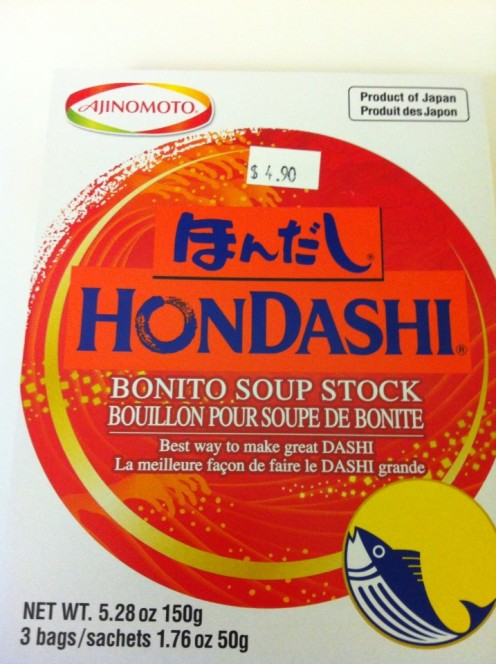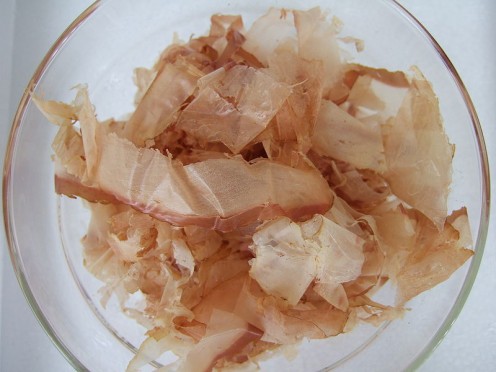- HubPages»
- Food and Cooking»
- World Cuisines»
- East Asian Cuisine
How to Make Dashi Stock - Quick and Delicious Recipes for Japanese Cooking

My ten year old son decided he wanted to learn Japanese. As a proud parent of a student who wanted to learn the linguistics of a far eastern country, I just couldn't say no.
My chest puffed out as I walked him into class on that first Saturday morning (yes, he volunteered to give up his Saturday morning to learn this language - did you see my pride just beam with this?)
The first thing the instructor did was introduce himself and then he asked my son why he wanted to learn Japanese. Of course, I was expecting him to reply with his profound interest in Asian cultures, or his love of the music of the Shakuhachi or the Biwa. No...not my son...he replied with the erudite, "I like the food."
I was crestfallen and I was certain that the instructor thought we were the typical American rednecks. I debated whether I should reply "He's adopted," but thought my spouse would kick me. Instead, I hastily made my exit, hoping no one recognized me.
It all turned out for the best, though. My son is learning to read the language, understand the words and, yes, his love for Japanese food continues. On the way home from class one day, he asked me to make udon soup. We love ordering that in the local restaurants, but I thought it would be a lengthy and complex endeavor in the kitchen. Wow! Was I wrong!
In this article, I will discuss how to make one of the staples of Japanese cuisine (including the udon soup) - Dashi.
Ingredients
- 2 Sheets Dried Kombu
- 1 Handful Bonito Flakes
- (optional) Shiitake Mushrooms
- (optional) Niboshi (Dried Sardines)

Is it Healthy? You Bet it is!
per serving
| 10 calories
|
|---|---|
Total Fat
| 0 grams
|
Saturated Fat
| 0 grams
|
Cholesterol
| 0 mg
|
Sodium
| 10 mg
|
Carbohydrate
| 0 grams
|
Dietary Fiber
| 0 grams
|
Sugar
| 0 grams
|
Protein
| 1 gram
|
Traditional Ichiban Dashi
Ichiban means "First" is Japanese and this recipe is the first use of the traditional ingredients Kombu (seaweed) and Bonito Flake mix.
The Kombu should steep in room temperature water for a few hours. After it softens, heat it until it ALMOST boils. Make sure to remove the Kombu before the water actually boils.
Add the dried bonito flakes to the water for about five few minutes.
Strain the mixture into a bowl and it is ready to serve. I enjoy adding half a cup or so over udon or soba noodles with some fresh vegetables.
In the video to the right, dried sardines were added for a few minutes. This is not a requirement, but it does add a wonderful flavor. Try it sometime!
Tip: While fresh dashi is always best, I have had great success in freezing the leftover mix and warming it back up when I want to use it again. It saves very well!
Kombu and Bonito Flake Dashi
Niban Dashi
Niban means "Second" in Japanese and this recipe is designed to create the dashi using the same ingredients again. As expected, this broth will not be as strong or flavorful as the ichiban dashi, but is perfect for use in stews or even for people who don't like the more powerful flavor of the ichiban.
for this recipe, simply place the leftover kombu and katsuobushi back into a pot with a few quarts of water to simmer for about 10 minutes. Don't let it boil. Strain the liquid into a container and you have yourself niban dashi - a fabulous stock for many Japanese dishes!

Instant Mix
If you don't have the time or the availability of the key products, don't overlook the benefits of instant mix.
The only drawback to the instant mixes is that they typically include MSG or other high-sodium additives. I much prefer to make dashi from scratch, but sometimes instant is your only choice.

Use a Mizudashi
A Mizudashi is used to cold brew coffee. An extra large scoop of grounds in the filter and the coffee slowly brews without the high heat.
This can also be used for niban dashi. Add the seaweed and dried bonito into the filtered area and let the mixture slowly steep into a flavorful broth. Because this is the second use of these ingredients, the resultant stock won't be as strong, but this is a great way to reuse your ingredients.
Of course, when you aren't making another batch of dashi, you can make some delicious coffee! You can't beat that!

Alternative Dashi Recipes
There are several variations of the traditional recipe.
Kombu Dashi - is made by steeping kelp (Kombu) in water.
Shiitake Dashi - is made by using dried shiitake mushroom in water and creating a delicious mushroom stock.
Niboshi Dashi - is made with dried sardines in water.
Katsuobushi Dashi - is made with the dried bonito flakes in water.
Of course, these ingredients may be combined and the longer you steep them, the stronger that flavor becomes.


Other Great Dashi Stock Sites
- Eden Foods - Kombu Dashi (Traditional Japanese Soup Stock) - Recipe
- How To Make Dashi (Basic Japanese Sea Stock) — La Fuji Mama
How to make dashi–basic Japanese sea stock (both ichiban dashi and niban dashi). Such a simple and rewarding process! - Dashi Recipe : Alton Brown : Food Network
Food Network invites you to try this Dashi recipe from Alton Brown. - Japanese basics: dashi stock | Just Hungry
Just Hungry is a food site dedicated to Japanese home cooking recipes for people living outside of Japan and healthy and delicious eating.







